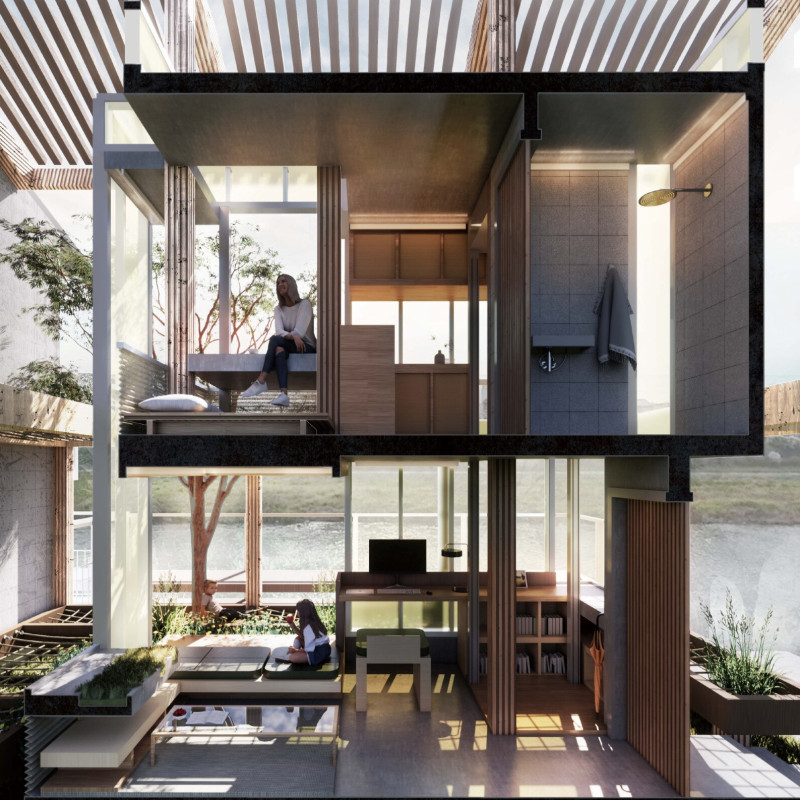5 key facts about this project
The project occupies a strategically chosen site, enhancing its visibility and accessibility. It operates as a multifunctional space, catering to various activities and user needs. This versatility is evident in its layout, which encourages interaction while offering distinct zones for different purposes. The architectural design incorporates open areas that facilitate social interaction, complemented by enclosed spaces for privacy and focused activities.
Materiality plays a critical role in the project’s overall expression. A careful selection of materials has been made to not only achieve aesthetic appeal but also durability and low maintenance. The prominent materials include brick, glass, wood, and steel. The use of brick provides a textural richness and warmth, linking the structure to its historical context. Glass elements introduce transparency and allow natural light to permeate the interior, creating an inviting atmosphere. The incorporation of wood adds an organic touch, promoting comfort and connection with nature. Steel provides structural integrity, enabling innovative forms and expansive spaces.
The design methodology employed in this project illustrates a commitment to integrating the building with its environment. The architectural approach reflects a sensitivity to the local culture and climate, utilizing passive design strategies to minimize energy consumption. Features such as strategically placed windows promote natural ventilation and daylighting, reducing reliance on artificial lighting and climate control systems.
Landscaping is also a notable feature of the project, with thoughtful consideration given to outdoor spaces that enhance user experience. The integration of green roofs, gardens, and communal areas emphasizes the importance of nature in urban settings. These elements not only contribute to the building's ecological performance but also foster a sense of community by providing gathering spots for residents and visitors.
One of the unique aspects of this design is its emphasis on user-centric spaces. The layout is intentionally designed to guide occupant movement, encouraging exploration and interaction. This focus on the human experience can be seen in the thoughtfully proportioned spaces, the relationship between indoor and outdoor environments, and the attention to material textures that create a tactile experience.
As visitors engage with the architectural designs and observe the interplay between form and function, they will appreciate the intentionality behind each decision made throughout the project. By examining the architectural plans, sections, and overall design strategies, one can gain insights into how the architects have responded to contemporary challenges in architecture.
This project exemplifies a commitment to thoughtful design, sustainability, and human-centered principles. It invites the community to engage with its environment and promotes a sense of belonging, simultaneously serving both its practical needs while making a lasting architectural statement. Interested readers are encouraged to further explore the project presentation to delve into the intricate details that define this architectural endeavor.


 Yu Chen
Yu Chen 























